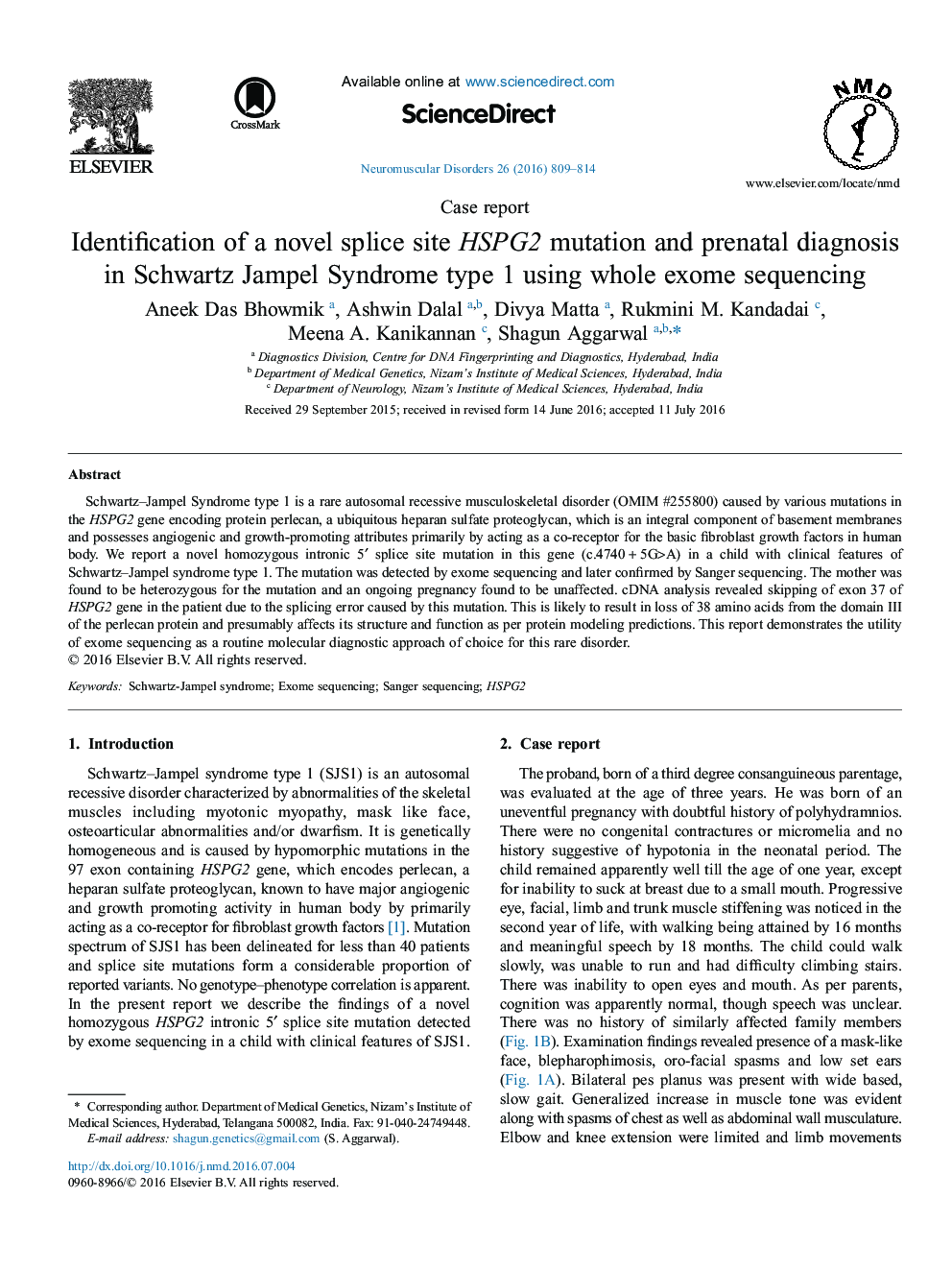| Article ID | Journal | Published Year | Pages | File Type |
|---|---|---|---|---|
| 5632233 | Neuromuscular Disorders | 2016 | 6 Pages |
â¢A novel splice site HSPG2 mutation was identified in SJS1.â¢cDNA analysis revealed skipping of exon 37 of HSPG2 gene due to the splicing error.â¢This results in loss of 38 amino acids from the domain III of the perlecan protein.â¢This presumably affects its structure and function as predicted by protein modeling.â¢Exome sequencing is helpful for diseases with inherent phenotypic variability.
Schwartz-Jampel Syndrome type 1 is a rare autosomal recessive musculoskeletal disorder (OMIM #255800) caused by various mutations in the HSPG2 gene encoding protein perlecan, a ubiquitous heparan sulfate proteoglycan, which is an integral component of basement membranes and possesses angiogenic and growth-promoting attributes primarily by acting as a co-receptor for the basic fibroblast growth factors in human body. We report a novel homozygous intronic 5â² splice site mutation in this gene (c.4740â+â5G>A) in a child with clinical features of Schwartz-Jampel syndrome type 1. The mutation was detected by exome sequencing and later confirmed by Sanger sequencing. The mother was found to be heterozygous for the mutation and an ongoing pregnancy found to be unaffected. cDNA analysis revealed skipping of exon 37 of HSPG2 gene in the patient due to the splicing error caused by this mutation. This is likely to result in loss of 38 amino acids from the domain III of the perlecan protein and presumably affects its structure and function as per protein modeling predictions. This report demonstrates the utility of exome sequencing as a routine molecular diagnostic approach of choice for this rare disorder.
